Remove or Score Membrane, Trim Scraggly Meat and Smaller Bones
If you’re smoking spare ribs and you want to trim them to a St. Louis Cut, here’s my how-to guide.
Basic Dry Rub for Ribs
For this article, I combined:
- 1 tbsp 16 Mesh Black pepper
- 1 tbsp Diamond Crystal Kosher Salt
- 1 tsp Garlic powder
I then applied that to both sides of the ribs.

The reason I opted to use 16 Mesh black pepper is because it really helps to create a crunchy bark. You can also use significantly more of it without the “peppery” taste being problematic.
Since we’re smoking no wrap ribs for the purpose of the bark, we might as well use ingredients that further enhance the bark.
Get Your Smoker to 250-275F
The higher temperature will help to push past any sort of stall the ribs experience – since we’re not wrapping, this is beneficial.

Add a chunk of your favorite hardwood every 45-60 minutes for 3-4 hours.
I used cherry and pecan.
How to Tell When No Wrap Ribs are Done
With ribs, I always use the same tests to tell when they’re done:
- The Bend test
- The Tear test
- Probe tenderness
The bend test picks the ribs up at about the 5th rib. You then allow the other ribs to bend.
If the ribs are bending at about a 45 degree angle, they’re done.
Here’s the ribs at 175F:
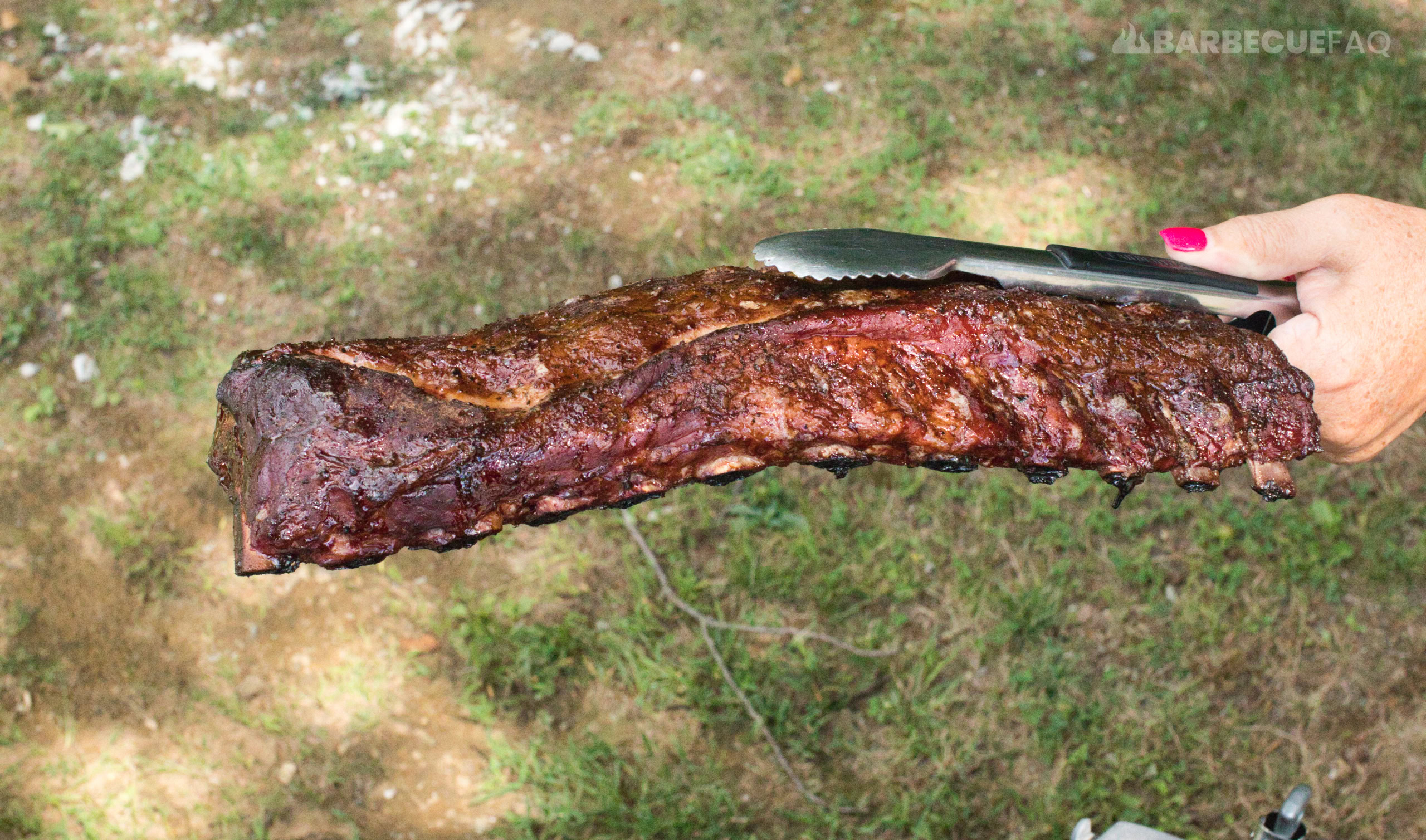
Here’s what ribs look like when they’re “done”:
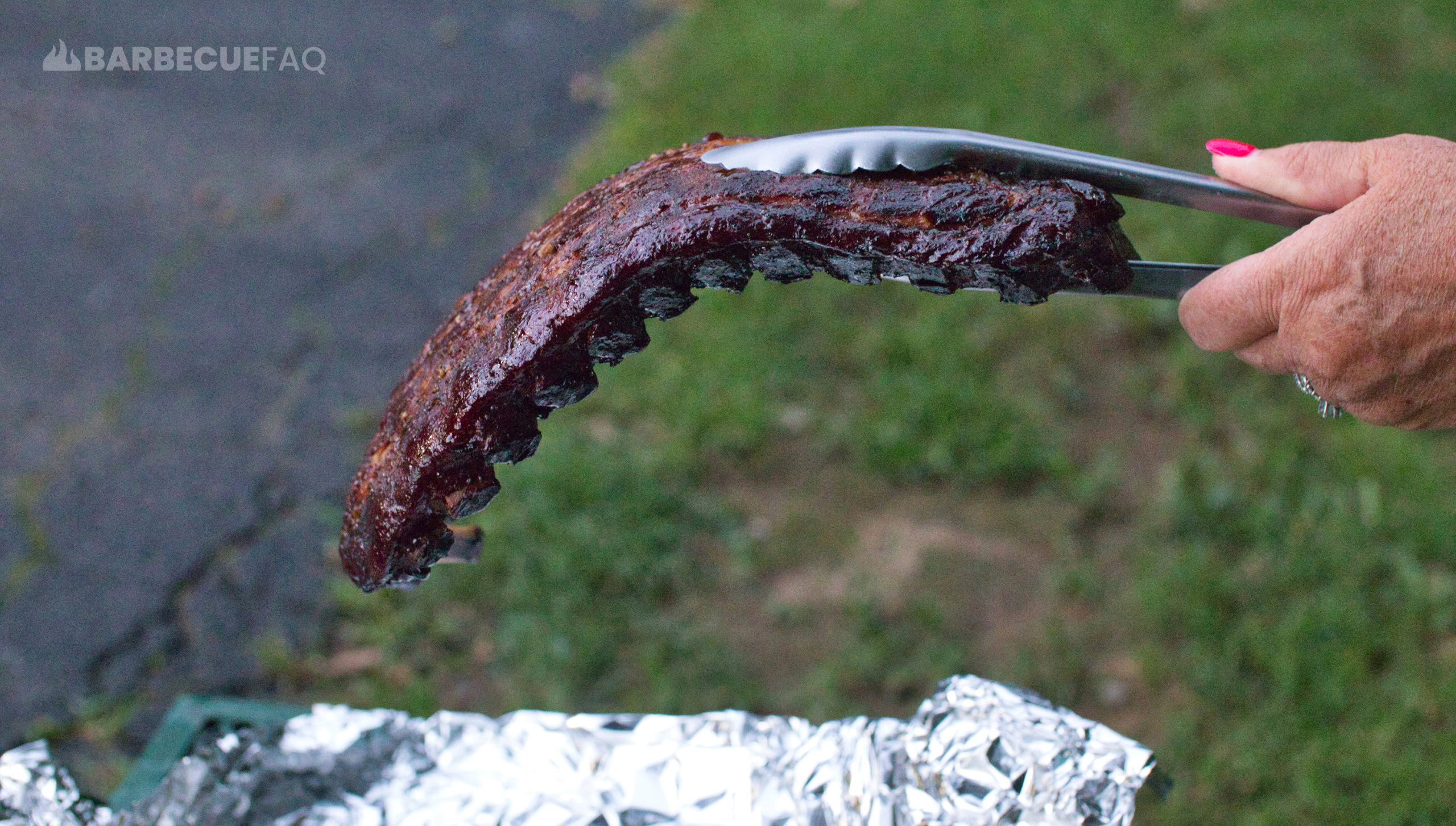
Next, you can do a tear near a bone in the center:
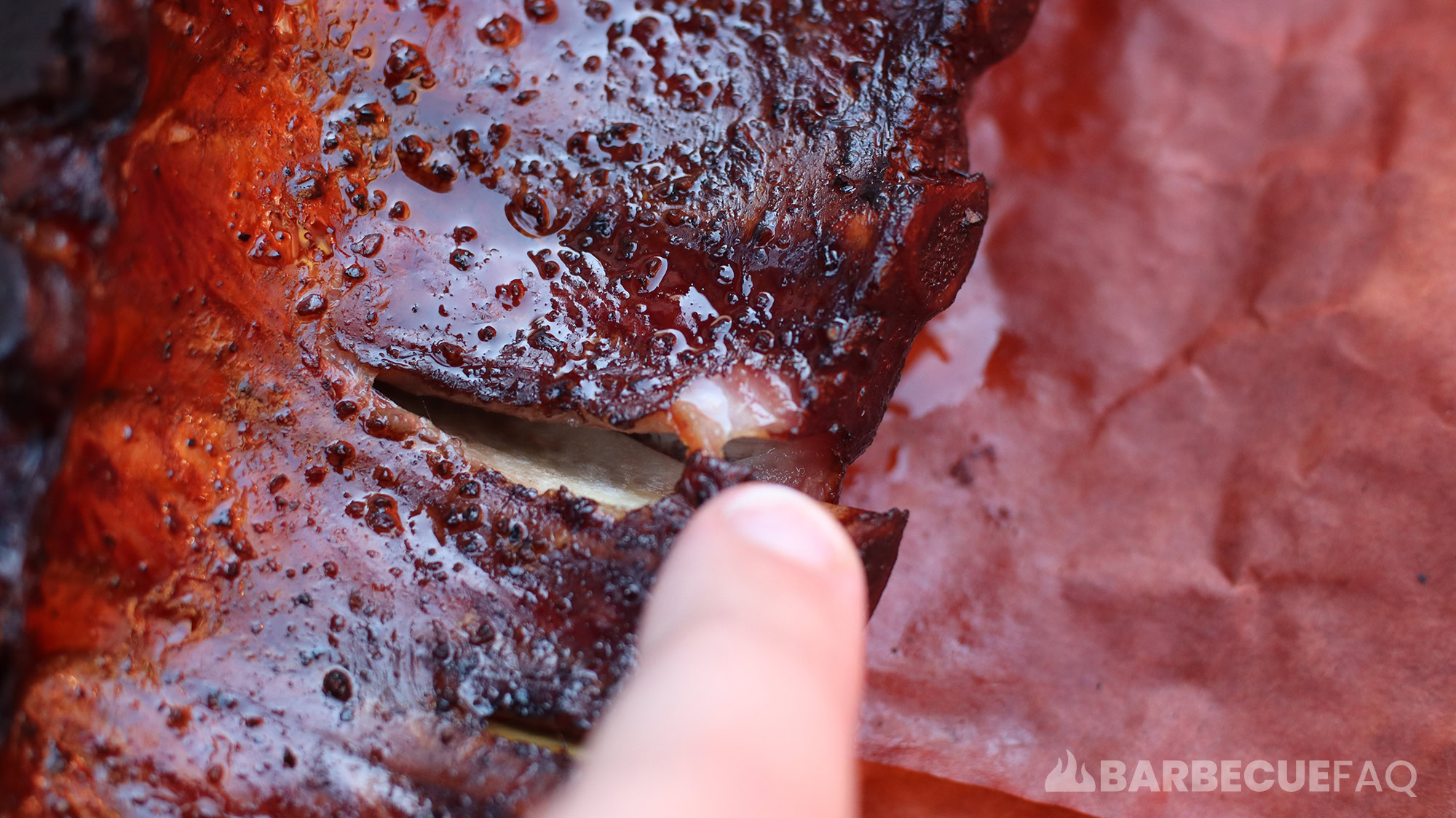
If the meat cleanly pulls away from the bone, the meat is likely done.
Next, you can probe between the bones with your probe or a toothpick. If the probe/toothpick glide through like hot butter, they’re likely done.
If you like internal temperature, they’ll likely finish in the range of 195-205F.
Rest the Ribs for 15 Minutes
This is long enough for the bones to be held.

When you’re resting, you DO NOT need to tent them with foil. This will only build up moisture and soften the bark.
While you’re resting, you can also sauce your ribs with your choice of barbecue sauce
Optionally, you could also return these to your smoker to glaze for 10-15 minutes.
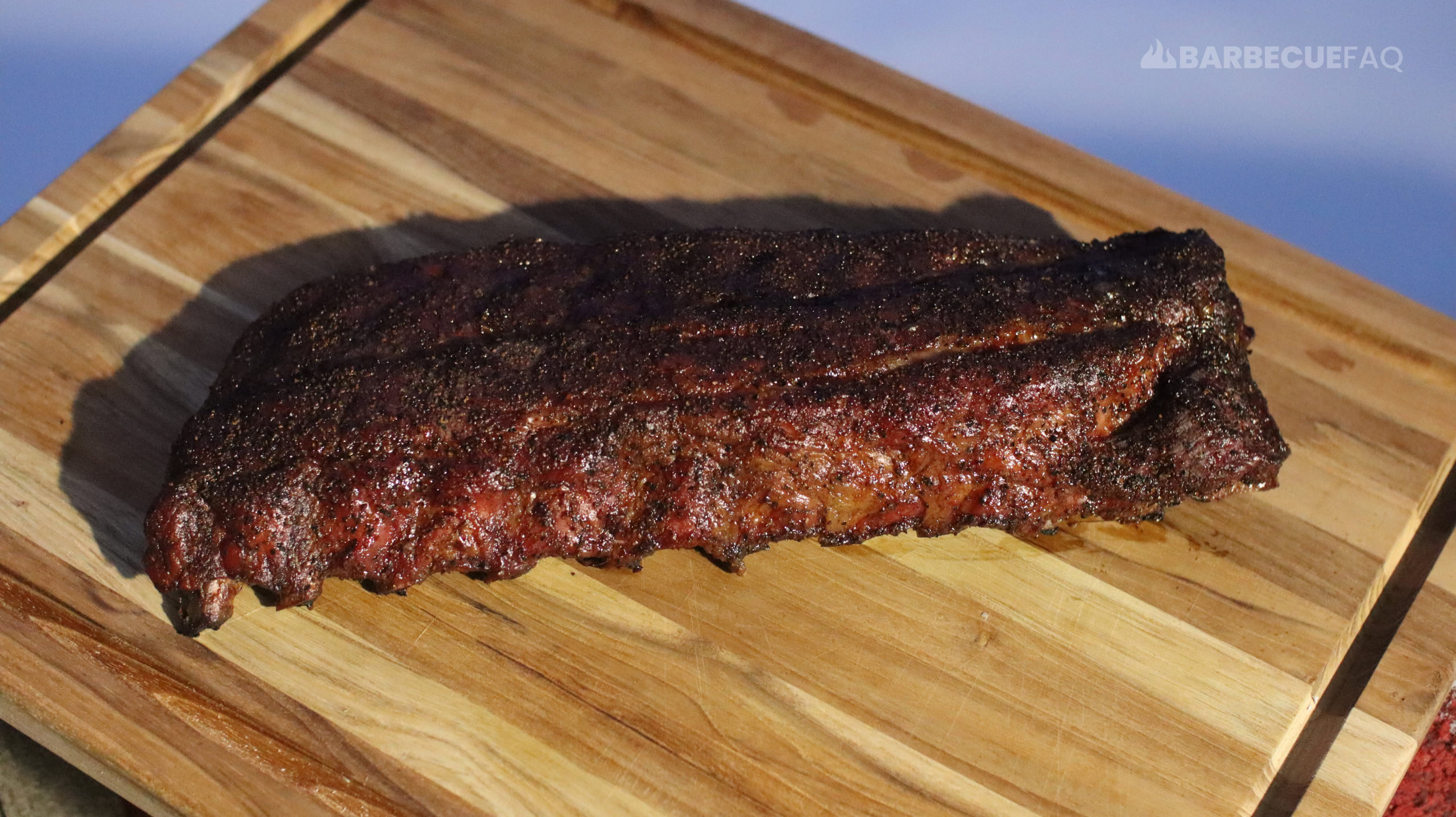
No Wrap Ribs
Ingredients
- 1 rack Baby Back Ribs
Rib Rub
- 1 tbsp Diamond Crystal Kosher Salt
- 1 tbsp 16 Mesh Black Pepper
- 1 tsp Garlic Powder
Instructions
- Remove the membrane from your ribs. Use a butter knife to lift the membrane and then use a spoon to continue to lift it without tearing. Once lifted, use a paper towel to rip it off horizontally. Discard the membrane in the trash.1 rack Baby Back Ribs
- Combine in a bowl my rib rub ingredients in the specified quantities. Apply the rub to the front and the back of the ribs.1 tbsp Diamond Crystal Kosher Salt, 1 tbsp 16 Mesh Black Pepper, 1 tsp Garlic Powder
- Get your smoker to somewhere between 250-275F.
- Once your smoker has stabilized, put your ribs on your smoker and add a chunk of hardwood. I used a chunk of cherry and a chunk of pecan.
- Every hour for 3 hours, add a chunk of hardwood to the fire.
- Wait for the ribs to reach tenderness. I like to use the bend test and the tear test to determine when ribs are done. Ribs should bend at a 45 degree angle and meat should tear away from bone. Ribs that are tender will tend to be in the range of 190-205F.
- Once tender, take off your smoker and rest for 15 minutes. While resting, add your sauce. Optionally, return to your smoker to glaze the sauce for 10-15 minutes. Once sauced, slice between the bones and enjoy!


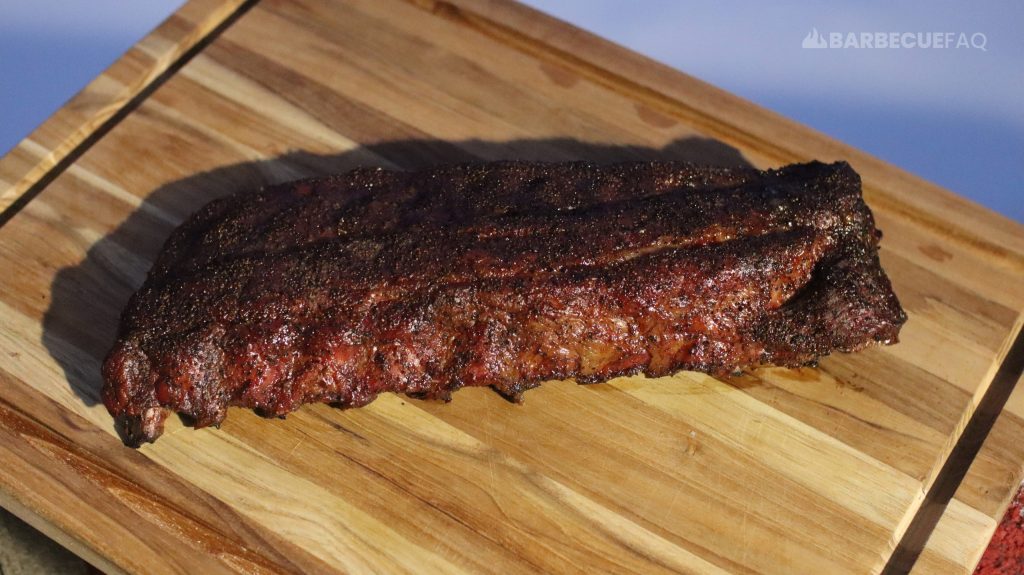
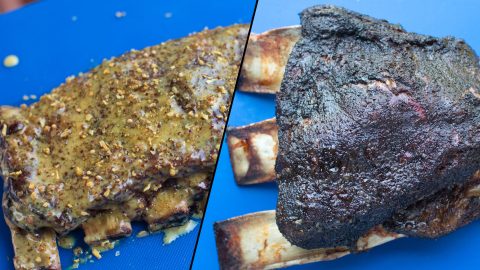
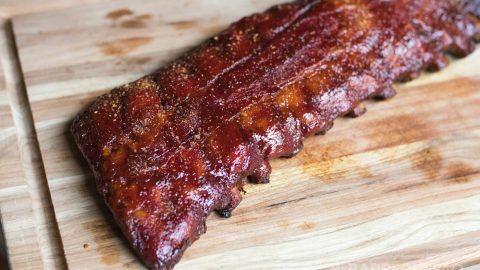

5 comments
Ace
Great recipe my friend. Love the ribs. I like a little barbecue sauce so after I left the ribs rest, I put my sauce on a little let him rest some more and away we went
Dylan Clay
Happy to help Ace!
Scott
Thanks for this article. Just what im looking for! Appreciate it.
Dylan Clay
Happy to help Scott!
Phillip
I just did the 3-2-1 method and to be honest I’m a little tired of the fall off the bone rib next time I’m using your recipe I have a pellet smoker and it should work well with your recipe